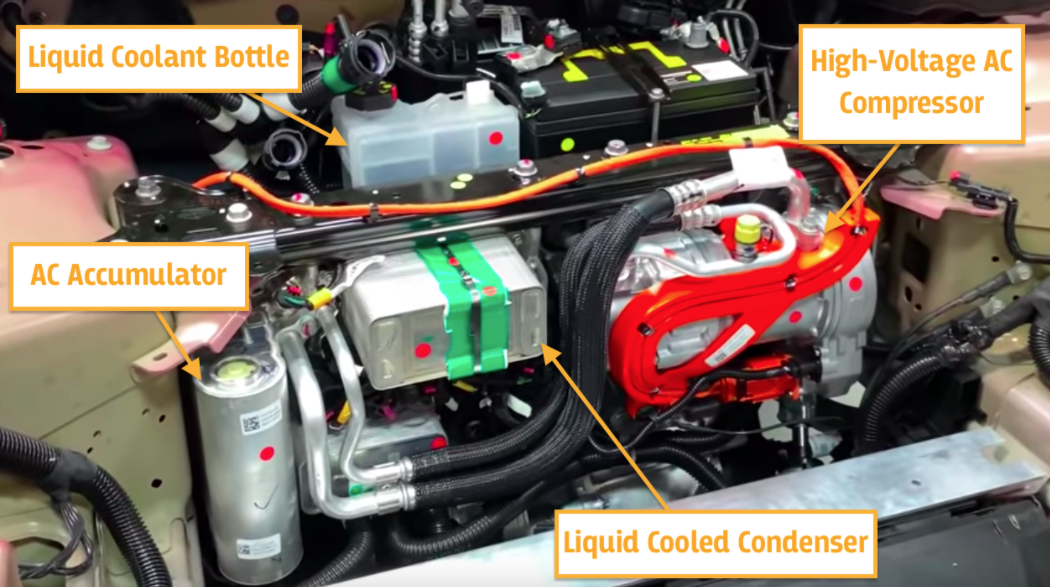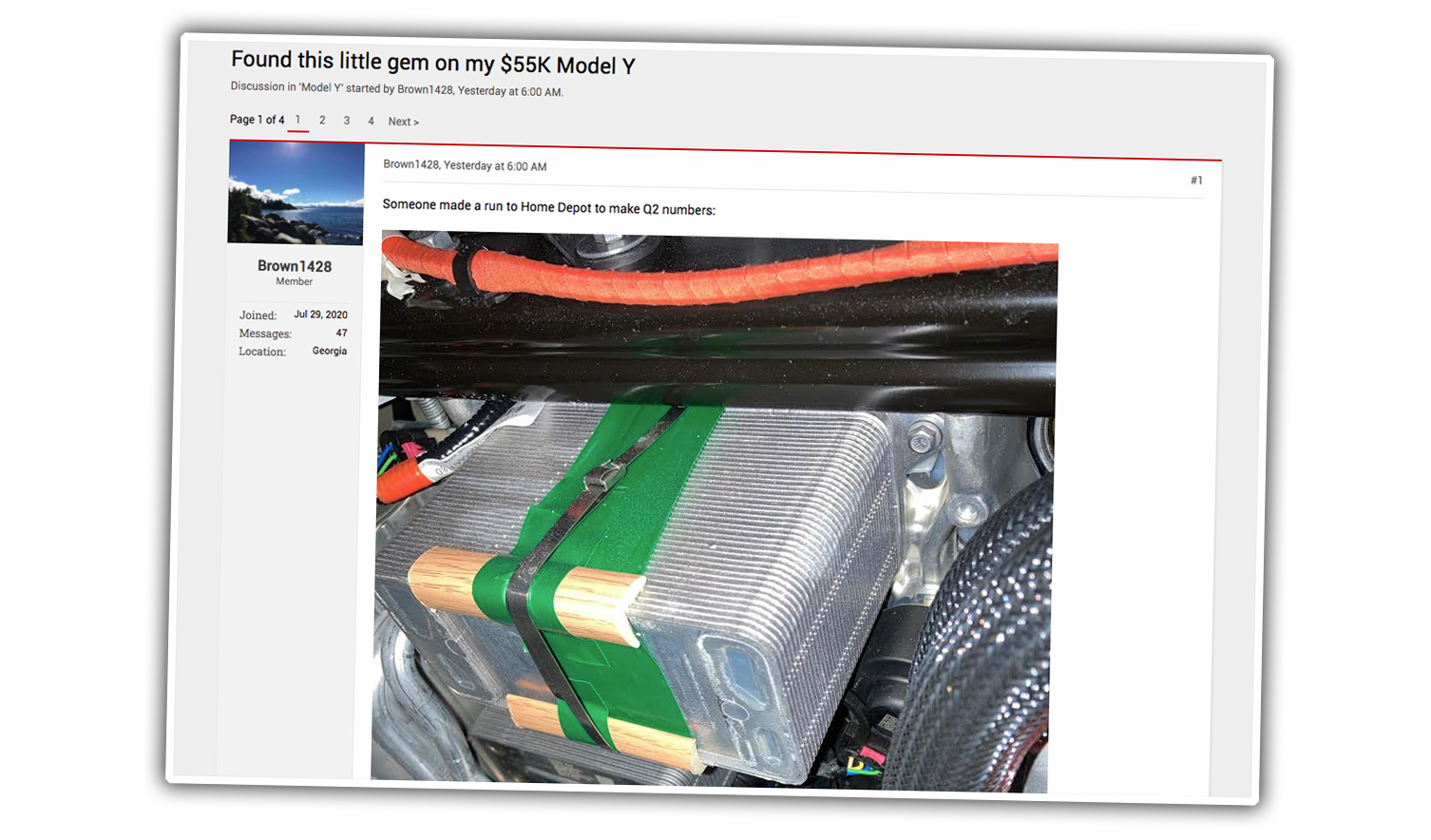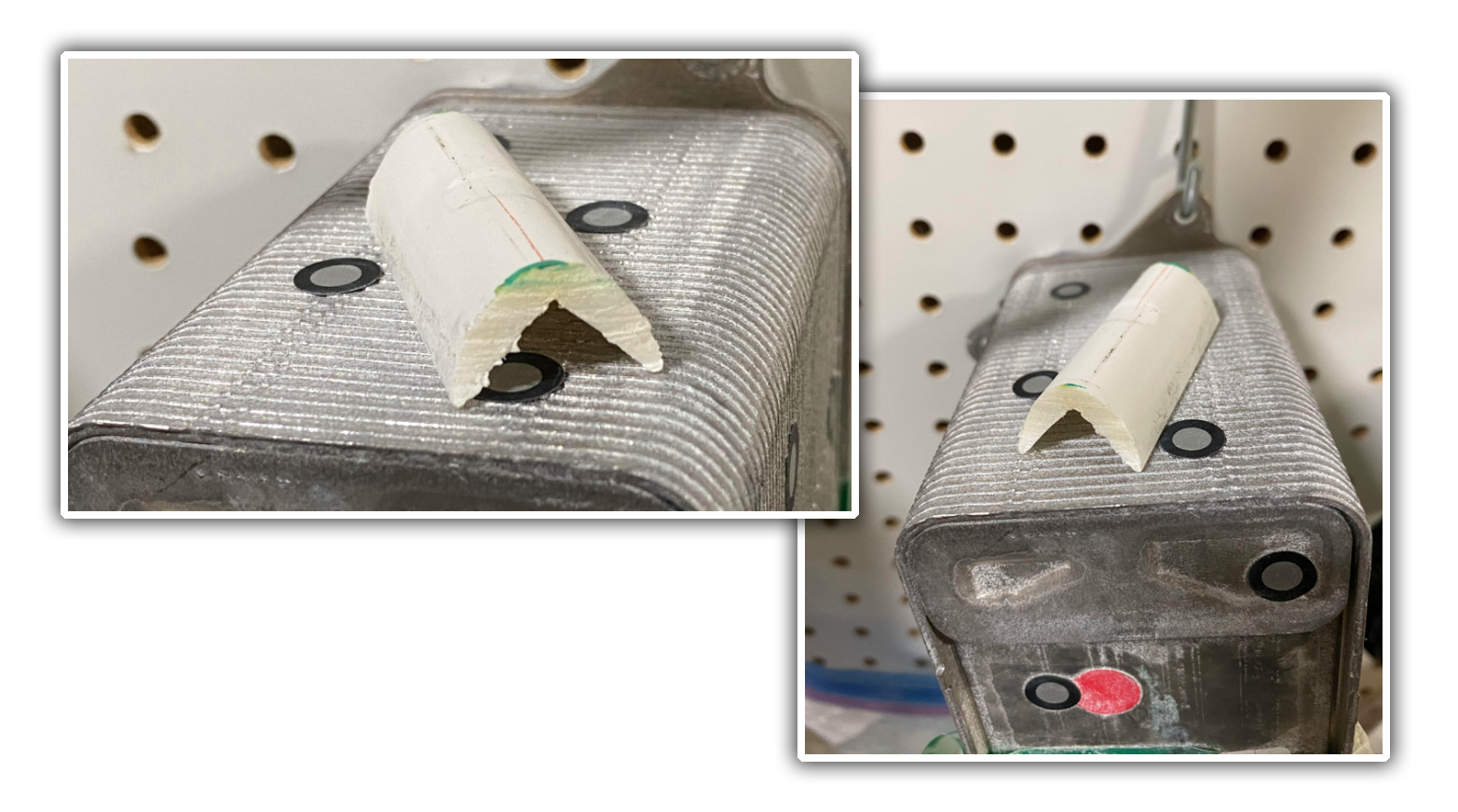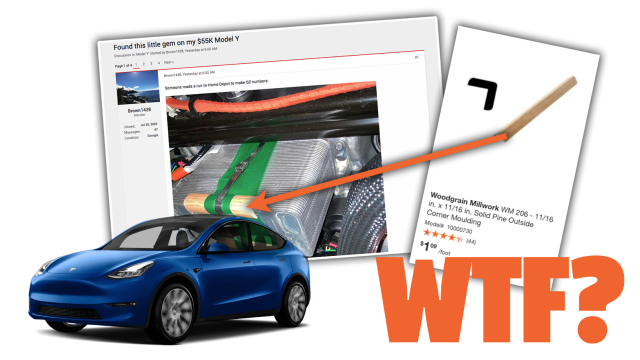I know true Tesla stans like to believe that each and every car is created from a soup of pure matter, assembled at the atomic level via beams from Elon Musk’s third eye before having artificial life fucked into them in a beautiful and arcane ceremony involving Elon in a silken robe, but the truth is really far more mundane. Quality has long been an issue for Tesla, and now owners of Tesla’s new Model Y are discovering some shockingly janky construction methods. Let me show you what’s going on.
The part in question is the Liquid Cooled Condenser, part of the Model Y’s cooling system, which, it should be noted, is a gloriously engineered setup. When our own David Tracy wrote about the system a while back, we quoted Cory Stuben, president of Munro, the company famous for evaluating the engineering of cars from pretty much every manufacturer, who called the packaging “second to none.”

The overall design and engineering of the setup isn’t the issue. The issue is in the details, specifically how that liquid-cooled condenser is mounted. In the picture up there, you can see that it’s held in place with a metal strap and some green tape. That’s odd, but it wasn’t really mentioned in any detail when Munro evaluated the car.
Individual owners, though, have had an opportunity to look at this more carefully, and have discovered some alarming-looking things. Like this, from this post on the Tesla Motors Club forum:

Is…is that wooden corner moulding? Like you’d buy in an eight-foot strip from Home Depot, and then cut to form protective corner covers for that condenser that’s just strapped in there? That just doesn’t look right.
Now, this is only visible if you remove the inner liner of the front trunk and is normally not something the customer would see. But why the original poster, who goes by Brown1428 and mentions he paid $US55,000 ($75,587) for his Model Y, found it is pretty telling in itself:
I spent considerable time fixing my own panel gaps after Tesla refused. This was under the cowling in the frunk.
…
Is it a big deal that Tesla used faux wood trim during assembly of my vehicle? No. Is it funny? Yes, yes it is!
I’d probably think it was funnier had I not had to spend 10 + hours disassembling and reassembling my vehicle to correct the gaps and alignment.
So, because his car was so poorly assembled, he had to dig into it himself, which is why he saw $2 moulding strips used to hold in a crucial component of the car.
And, he’s right — this may be funny on something like my Changli, but on a $US55,000 ($75,587) car, it’s a lot less comical.
What’s going on here? Why is this key component mounted in such a slapdash, afterthought-seeming way? To understand better, I reached out again to Cory Stuben, President of Munro, for some answers. Here’s what Cory told me:
The metal band, tape, and edge protection is 100% a “bandaid.”
I have seen three separate Model Y’s. Our red one (vin 3300), our blue one (vin 700ish) and a white one (VIN 25000 ish).
Each vehicle has the metal band but the parts were different on all of them. Different tape colour, and the plastic pieces were clearly cut from a some quickly-sourced-stock-material.
The metal bad routes through the Plastic housing for the Thermal system and the band cracked a portion of it.
The “faux wood” I have not seen.
I asked Cory about what might be the underlying cause of this; did they not anticipate that unit would need to have more support than its mounting bolts? Was it normally designed to be oriented vertically? Cory had some thoughts:
My hypothesis…. Tesla’s the original design of the LCC (Liquid Cooled Condenser) had a shorter “stack height” to begin with. They may have needed to add more “stack-height” for the Heat pump system to perform optimally.
I think the add stack-height made the cantilever distance too far which created a longer moment arm filled with heavy fluid in the LCC.
Tesla probably found leaks and/or failures (at the sealing face) during Validation and testing. THEN added the “Band-Aid.”
There is another smaller Stacked-Plate-Cooler used for the chiller on their thermal system, mounted in the same orientation, secured common, and that does not have the band.
I would hope that Tesla is already working on a replacement casting for the plate this mounts to that includes some real supports for the condenser other than scraps of moulding and a strap.
As Cory noted, that metal strap had already cracked a portion of the plastic housing of the thermal system; it’s not hard to imagine that years of vibration and use likely won’t be helping the situation here, and I wouldn’t be surprised to find this setup being a common failure point down the road.
I’ve reached out to Tesla for comment, but, seeing as how they never respond to press inquiries anymore, I’m not going to counsel breath-holding for anybody.
Cory from Munro also thoughtfully provided us with some detail shots of the materials used on their test cars. These seem to have quickly-cut bits of plastic moulding instead of wood:

In this shot you can see how much the metal strap has compressed the corner-protecting chunk of plastic:

